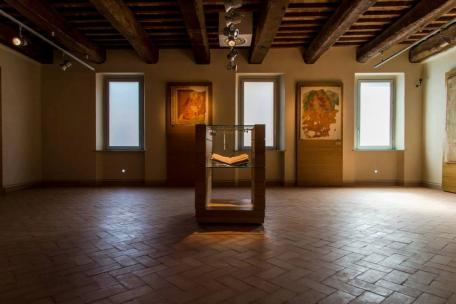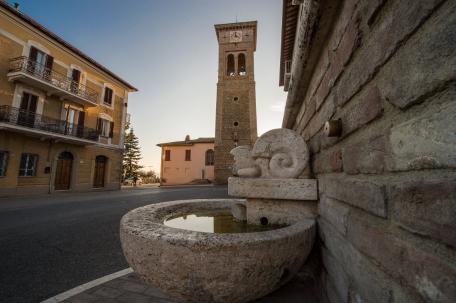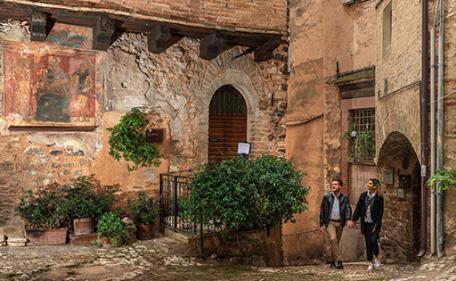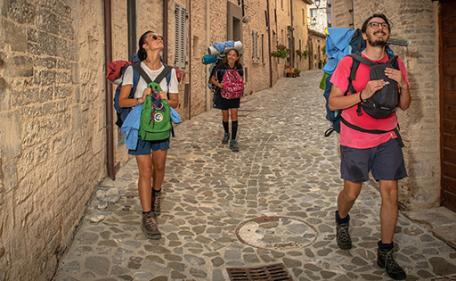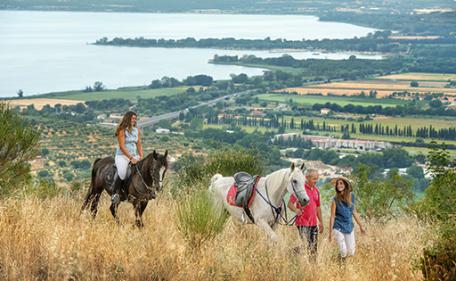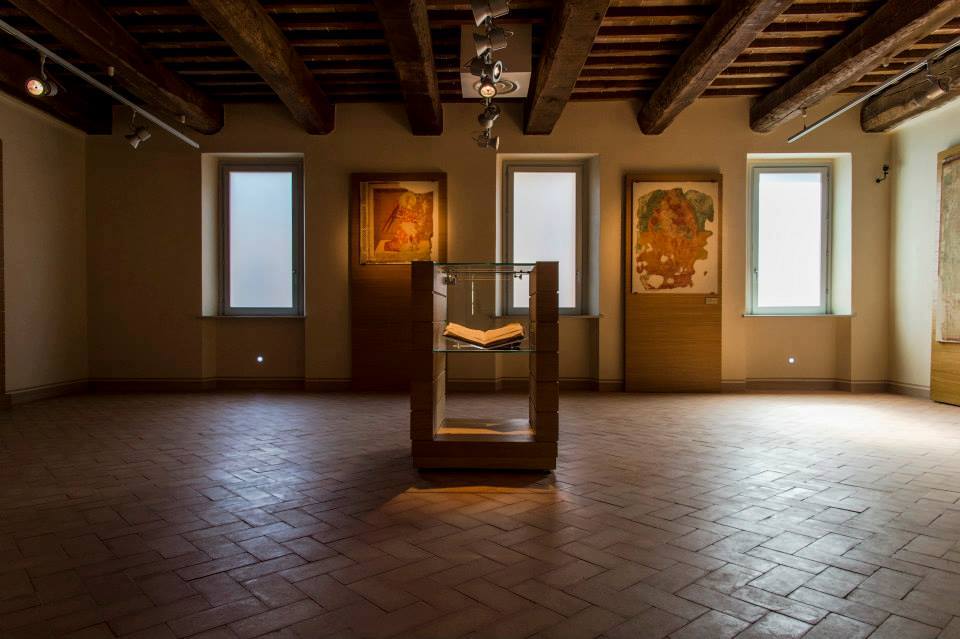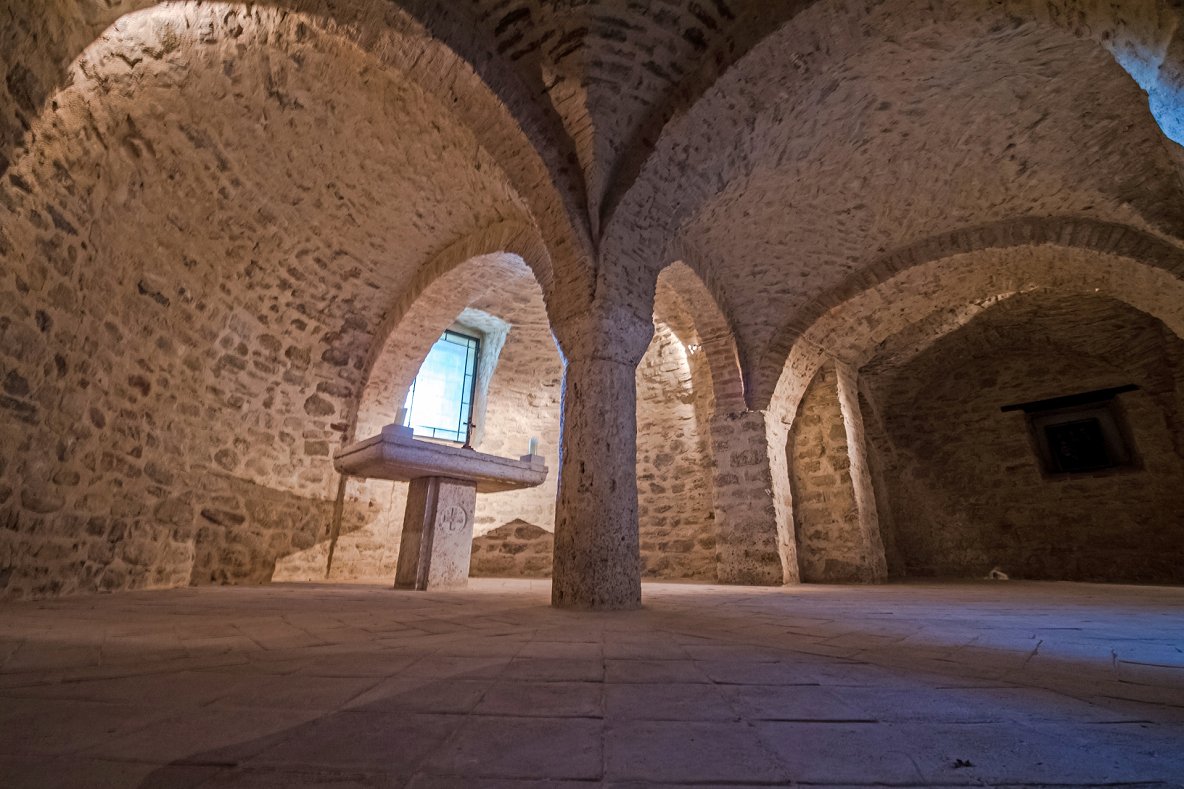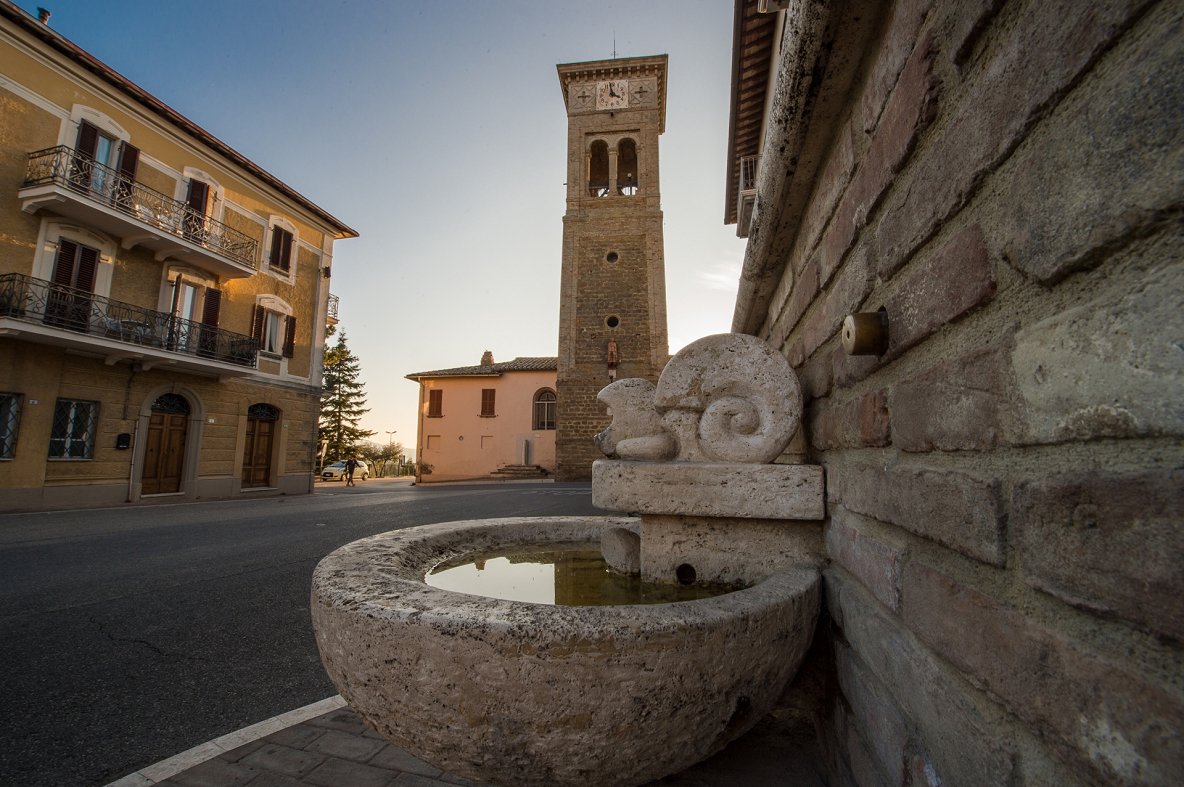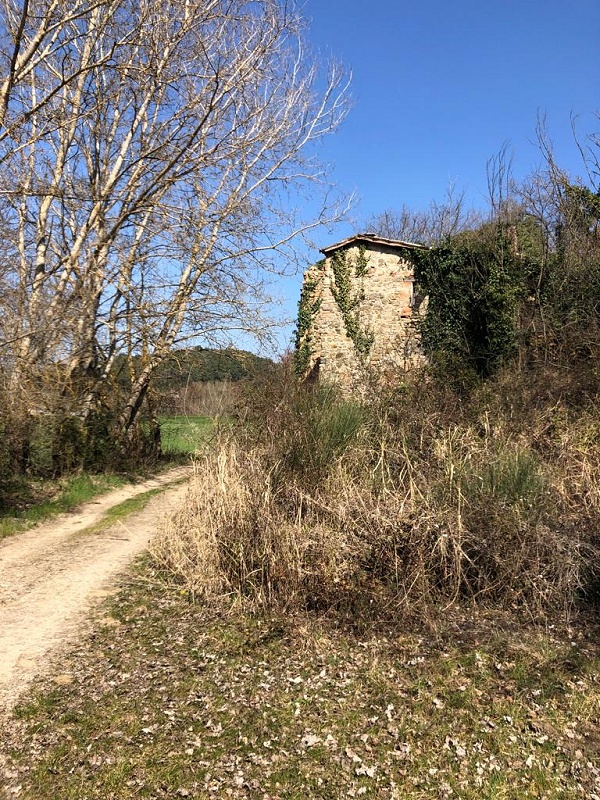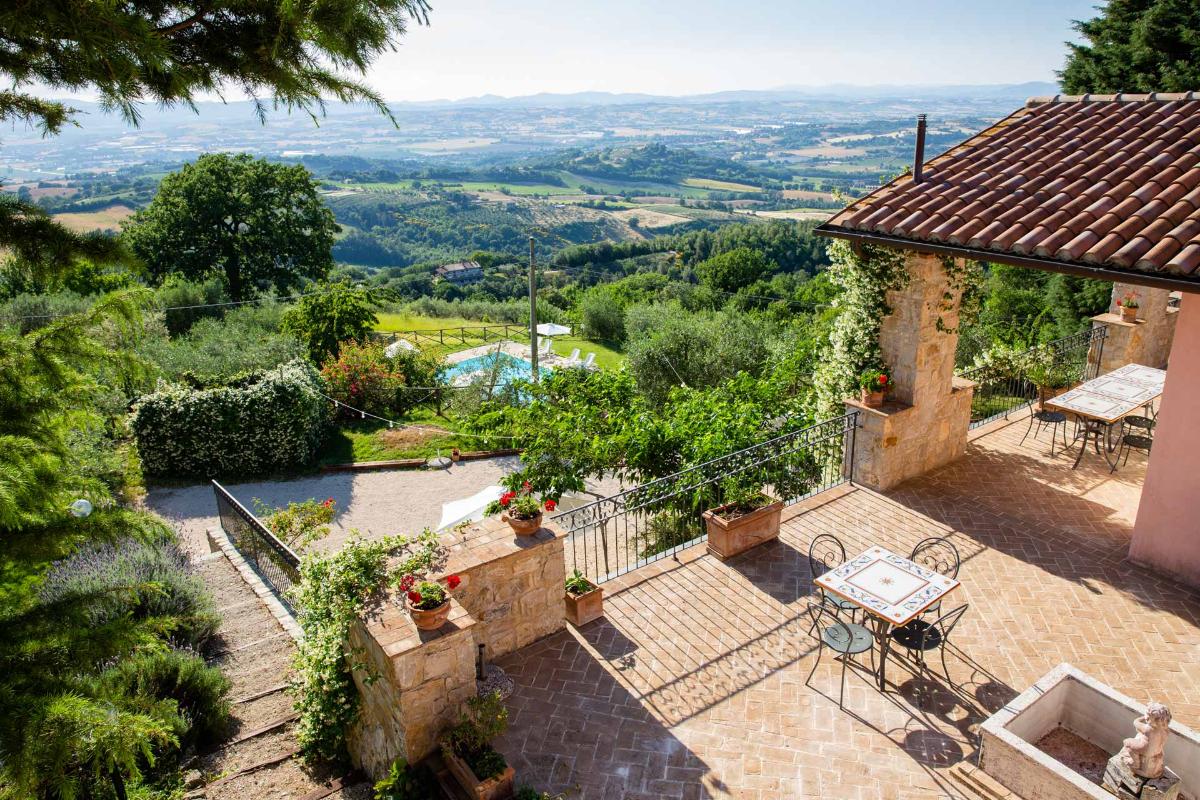| Start | Collazzone |
| Arrive | Collazzone |
| Distance | 8,5 km Trekking, 9,2 km Bike |
| Height difference | 320 m |
| Route duration | 2.5 hours (Trekking) - 1 hour (Bike) |
| Difficulty | easy, mainly flat route |
| Suitability | Trekking- suitable for everyone; Bike- suitable for those with some experience |
| Recommended bike | mtb |
| Duration | 2:35 hours (trekking): 58 minutes (bike) |
Excursion trail in the form of a loop that passes mainly in woodsy areas, the beginning and end portions of which pass through a road that is open to traffic. Departure is from the historic center of Collazzone (PG), near the Church of San Lorenzo. This parish church is located in the center of Collazzone, in front of the main square, nominated after Umberto I, nineteenth century king of Italy. The church was built between the nineteenth and twentieth centuries on what was once the castle keep, replacing the ancient parish that was originally founded in 1671. Of the original structure, the newer church retains the eighteenth-century belfry, built on one of the castle towers and still visible behind the apse. The façade, built with inspiration taken from the Church of San Francesco al Prato in Perugia, is characterized by both a beautiful rose window and terracotta decorations of local craftsmanship. Inside there are works of great interest, including a 13th century polychromatic wooden sculpture depicting the Madonna and Child. It is among the highest examples of Umbrian art. On the sides of the tabernacle, two angels of local manufacture were added in the 15th century. On the right wall of the church, there is a small but noteworthy fresco depicting the Madonna and Child which dates back to the fourteenth century.
From the square, proceed to Via della Fiera and then take Viale Marconi, following towards Via dell’Abbazia if continuing on foot, or Viale Marconi if proceeding by bike. Next, take Via di Collazzone downhill, where after about 500 meters, a left turn puts you into the woods on a dirt path. From this descent, a wide view is offered, overlooking the small villages of San Terenziano, Grutti, Marcellano, and the hamlets of Gualdo Cattaneo.
After about 1.3 km, turn left again, continuing downhill in the woods for another kilometer, arriving once again at a left turn. This path continues on the opposite side of a small hilly gorge which brings you to the ruins of an ancient mill. The Mulino delle Botte, now completely in ruins, is located along the road that runs adjacent to the Puglia stream, near the turning point towards the hamlet Gaglietole. Architecturally, the ruins of the mill present an almost square-based body with a small extension alongside.
The perimeter walls are built in river stone mixed with bricks. Leaving behind the remains of the ancient mill, continue on the dirt road, arriving at Strada Gaglietolese which continues uphill through the woods. Follow the dirt path until you reach Via Jacopone da Todi and rejoin the asphalted road Via dell’Abbazia. This road arrives at the convent of San Lorenzo where you can visit the crypt of Jacopone da Todi. After the Monastery, continue straight on Via dell'Abbazia to return to the historic center of Collazzone from Viale Marconi.
On the wall of the public parking lot in Viale Marconi, a modern mural can be seen entitled, “Mother Nature”. A visually striking work of street art created by a group of local artists, the mural, is painted brightly in two halves divided by the central face of a crying woman- Mother Nature in depiction. On her left side is a family at the table with skulls as faces. Adjacent, a farmer walks by with a gas mask, against the background of burnt hills and a building with the classic undulating shape of the asbestos roofs that are still present in large quantities in this territory. The predominant color on this part is bright red.
The excursion ends by continuing on Viale Marconi, and turning right on Viale Cesare Battisti to return to the starting point in Piazza Umberto I.
- The parish church of San Lorenzo
The parish church of San Lorenzo is situated at the center of Collazzone, in front of the main square dedicated to Umberto I. It was built between the 19th and 20th centuries, where the keep of a castle once stood, to replace the old parish church founded in 1671. Part of its original structure is the 18th century bell tower constructed on one of the castle keeps and still visible behind the apse of the church. The façade is characterized both by the beautiful rose window and by the decorations made up of local terracotta. Inside there are art works of remarkable interest, including a 13th c. wooden sculpture, polychrome, depicting the Madonna and Child. It's one among the finest examples of Umbrian Art. On the sides of the tabernacle two Angels of local manufacture were added in the 15th century. On the right wall of the church, note a small but interesting 14th-century fresco depicting the Madonna and Child.
- The Abbey of San Lorenzo and the crypt of Jacopone da Todi in Collazzone
The abbey, located not far from Collazzone castle walls, was home of the Benedictines since 1227 and of the Franciscans since 1236. In 1370, due to the several raids that involved that area, Pope Urban V ordered the transfer of the convent venue inside the castle walls. The convent is composed of a massive building destined as accommodation for nouns and of a church, believed to be of Romanesque origin, confirmation is given by the underground crypt structure, built in a style typical of the 10th and 11th centuries, where, according to tradition, Jacopone da Todi took refuge in 1306, looking for a solitary place to spend the last period of his life, dying on Christmas Eve of the same year. Today it is difficult to guess the layout of the ancient convent, which has been significantly changed following restoration works that have been made over the course of the centuries. The church is the most easily identifiable of the buildings: a simple structure divided into a nave with side aisles with rounded arches and characterised by wooden trusses.
- Jacopone da Todi
Jacopo dei Benedetti, known as Jacopone da Todi (Todi, about 1236 - Collazzone, 1306), is remembered for being a great Italian poet and an uncompromising religious man, who abandoned all his earthly possessions to follow "the word of God''. He was a member of a noble family and he was able to live a wealthy and accommodating life, studying law at the university and becoming a lawyer. In 1267 he married Vanna, daughter of Bernardino di Guidone, count of Coldimezzo. Unfortunately, not long after their wedding, Vanna died in a tremendous accident due to the dance floor collapse. Benedetti gave up his legal practice, gave away all his possessions and from about 1268 lived as a wandering ascetic, joining the Third Order of St. Francis. During this period, he gained a reputation as a madman, due to his eccentric behavior, acting out his spiritual vision, earning him the nickname he was to embrace of “Jacopone”. In 1278 he entered the Franciscan Order as a laic friar. The friar spends, at last, his last years in the Convent of San Lorenzo of Collazzone, where he dies in 1306. His body was originally buried outside Todi town walls, then his grave was discovered and his remains transferred to a crypt in the Franciscan Church of San Fortunato in Todi. The still existing tomb is adorned, at the behest of Bishop Angelo Cesi from Todi, with a slab engraved with the inscription: «Here lie the bones of Blessed Jacopone dei Benedetti da Todi, a friar minor who, mad with love for Christ with his new art, made fun of the world and conquered Heaven. He fell asleep in the Lord on March 25, 1296 year of the Lord ".
